Mechanically bored teak and eucalyptus didgeridoos
These are the stars of the music stores. You will often find them standing in a corner with the rain sticks … Yes the rain sticks … (The didgeridoo is still not taken seriously by store owners!).
Unfortunately, the aforementioned are the “official” representatives of our good old wooden stick at all those retailers. You will find such didges all over the world (I’ve seen them for myself in India and even in Australia, home of the didgeridoo!).
Just because they are eucalyptus does not mean you should trust them – these come from Indonesia and not from Australia (a big difference!). They are hollowed out using a large drill bit, not by termites. These “instruments” have nothing going for them. The poor quality bore creates an air column cluttered with splinters, leading in turn to a muffled sound. As if that weren’t enough, the low-quality manufacturing renders them poor in harmonics with a weak bass and overall horrible playability.
In short, you can find much better quality and for less money. Be aware of some unscrupulous sellers who will stubbornly attempt to convince you that the instruments are hollowed by termites. Not so fast; see below for some ways to recognize these types of didgeridoos.
How can you recognize a teak didgeridoo?
It is easy to detect. If you have in front of you a painted wooden instrument, with or without decorative carving priced between €30 and €80, then you are surely holding a teak.
Its shape is straight or slightly curved to allow a long drill bit to get through. You will often find it partially covered with a (poor) imitation of dot painting (an aboriginal painting technique that uses dots).
A teak looks like this:



How can you recognize an Indonesian eucalyptus didgeridoo?
This type of instrument is most often made of rough wood and more rarely found carved. It is a light beige color but the bell is often darker then the rest of the instrument (or vice-versa). Its shape is very similar to the teak didgeridoo. Its weight should also be taken into account; it will be light, unlike the termite hollowed didgeridoo which will be denser and therefore usually heavier.
If you have already spotted all these criteria on the instrument, there is little doubt that it’s an Indonesian eucalyptus. However, you can always verify that a drill bit has been used by looking inside the didgeridoo. Look into the bell end of the didgeridoo, and aim the mouthpiece end toward a light source. You should see at least one, and maybe all, of the following:
- splinters left by the drilling procedure (a eucalyptus didgeridoo that has been dug by termites will not have splinters);
- the general shape of the air column is a pure cylinder (like the drill) as is the case in a teak didgeridoo;
- at the far end of didgeridoo, the bell end is further gouged out and smoothed to widen the inside diameter.
These elements are the most striking and, of course, they can differ slightly from one didgeridoo to another. However, as was true with the teak, keep in mind that a wooden didgeridoo selling for between €90 and €220 is almost certain to be a mechanically bored instrument.
To get a better idea of what this might look like, here is an example:

Did you already buy one of these didgeridoos? (I can see that disappointment in your eyes!). Don’t despair. These can be fine to get you started playing the didgeridoo. I know because that’s exactly what I did. Later, when I felt the need to improve the sound and playability, I cut my didge in half lengthwise to be able to rework the inside. But in the end, I never undertook that work, nor did I even put it back together. I “solved” the problem by buying a much better didgeridoo. At least the thought was there!
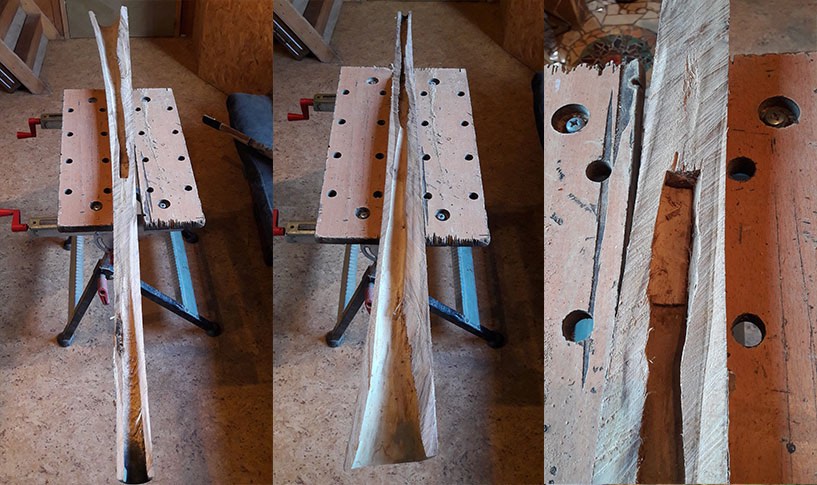
When you see how this “didgeridoo” was bored through, there is no need for further comment. Just keep in mind that when you want to improve your playing after learning the basics, think about getting yourself a higher quality instrument. You will see, feel, and hear the difference! In the meantime, you can rather simply vanish the interior of your didge to improve its sound somewhat.
Industrial bamboo (prone to cracking)
This type of didgeridoo is even more widespread than the previous two. At the end of the 90s, when the music of the band Jamiroquai helped to spread the popularity of the didgeridoo, you could even find bamboo didges in some supermarkets! Keep in mind their affordability is exceeded by their mediocrity. You will see them either painted (like their teak cousins) or engraved. The biggest disadvantage of these instruments is they typically don’t last long. They usually end up splitting. Priced around €20, bamboo didges certainly seem like a a great deal, but they’re not. If you are moved by the thought of a bamboo didgeridoo, consider a handcrafted version like those made by David Defois. These are guaranteed to be quality instruments.


Eucalyptus hollowed by termites for less than around €400
Be careful with these, too . Being made from eucalyptus dug out by termites is not necessarily a sign of a quality didgeridoo. Why? Because in Australia the didgeridoo is almost always intended to be a decorative souvenir for tourists! No wonder most Australians do not take them seriously.
I still remember the customs officer’s reaction when I told them why I was coming to Australia. I had noted on the customs paper: “For the didgeridoo.” They burst out laughing: “No, but really, why are you coming?” And so began my journey…
In Australia, 95% of didgeridoos are sold in souvenir shops. They are manufactured quickly and with no attention to quality. One can even find didgeridoos as short as 50 cm to fit into a suitcase! Needless to say, they will end up as a decoration by the fireplace (or perhaps inside of it)!
All this to say that a termite-hollowed eucalyptus is not by itself a sign of quality. If you are there in Australia you can find a good deal for $100 (€75). A didgeridoo at that price will not be extraordinary, but you won’t be risking much. However, if you see a similar deal anywhere else on the planet, you better walk away. For the same price you can get an incomparably better agave didgeridoo from Véfoun (FR) or Tyler Spencer (US) (check this article “What didgeridoo to start with“) which is incomparably better!
Conclusion: Most buyers and most sellers know very little about the didgeridoo
Obviously this article is not intended to shame music stores and other retailers handling didgeridoos. Most of them are not well informed about the instrument. They carry what the market seems to demand – and it is up to us, the players, to make an informed choice among what’s available out there. I hope this article will help you avoid getting lost in that jungle.
See the next article for several didgeridoos I can recommend for you.


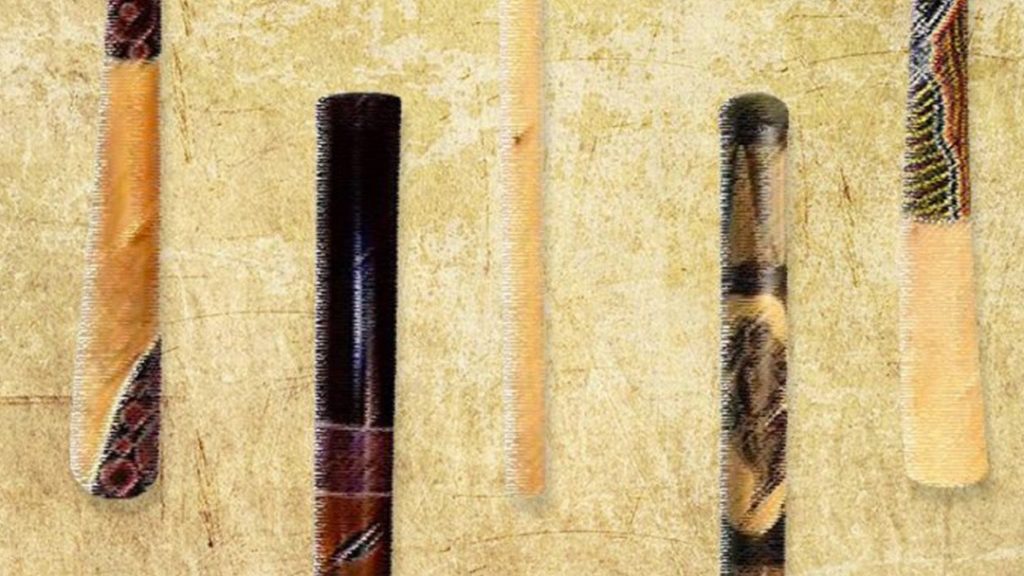




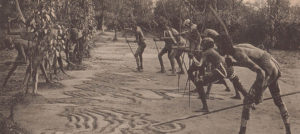

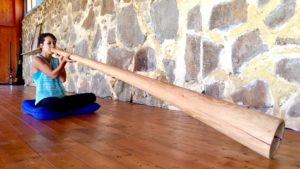

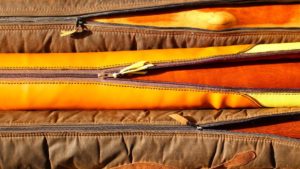

Hi and thanks for the advice!
It’s hard to find some good didgeridoos to start!
Hi Gary, sorry I didn’t see your comment!
So my turn to thank you for your comment. It’s a good motivation for me. ?
Thanks for this article. I am wanting to start the journey and haven’t pulled the trigger in one yet.
Sorry Scott, I didn’t see your comment before.
So, didn’t your start now ? ?